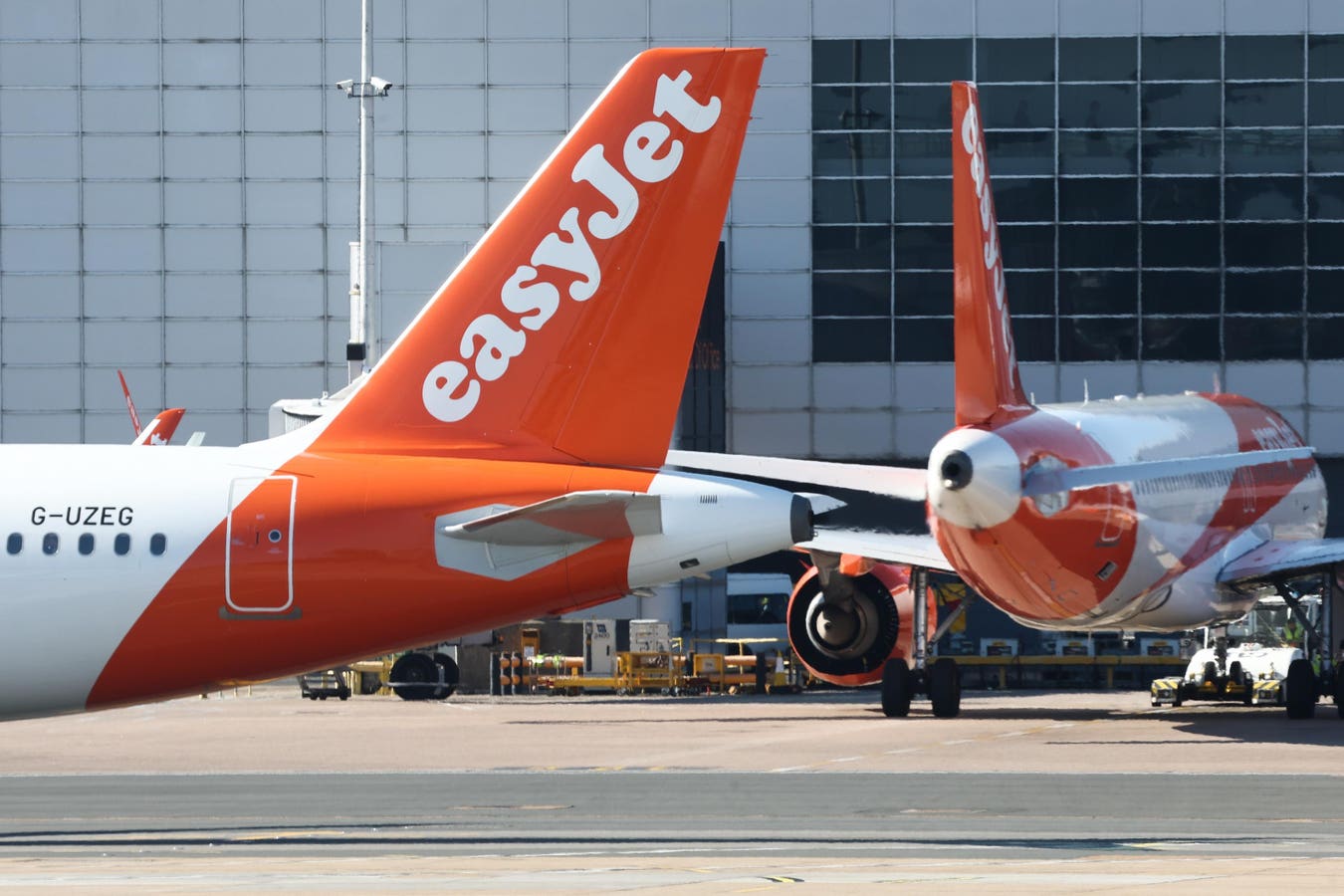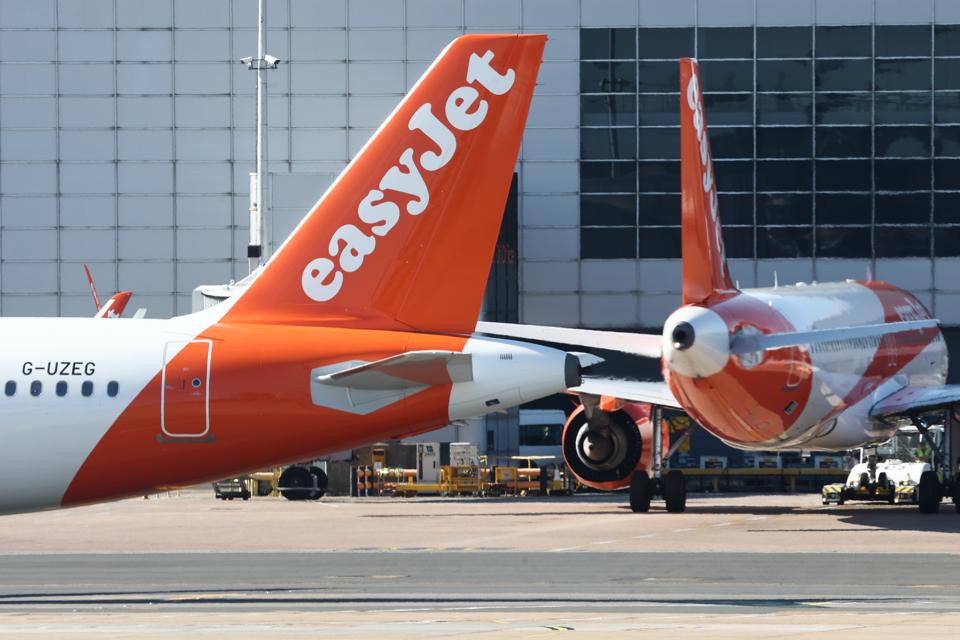easyJet plane is seen at London Gatwick Airport in Crawley, Great Britain on July 11, 2025. (Photo … More
easyJet (LON:EZJ) is set to report its Q3 figures on Thursday. With the easyJet share price down 11.6% since disclosing its interim results in May, here’s what investors need to know ahead of its Q3 update for a potential rebound to occur.
Turbulence Calming Down?
easyJet had quite a decent H1. All its divisions realised healthy growth rates, with sales in its packaged holidays segment seeing the highest growth, at 28.6%. Nonetheless, the decline in ticket yields took some of the report’s shine off, as the company invested in its new winter routes by stimulating demand through lowering prices. Consequently, passenger RASK fell 6.3% to 3.88p, with passenger revenue per seat also sliding 0.7% to £48.02.
As such, investors should pay close attention to Q3’s RASK. I’m estimating yields to remain flat-ish to slightly positive (4.54p vs 4.56p last year). This is due to the fact that easyJet still launched new routes in Q3, which are likely to continue weighing on RASK. Having said that, the higher demand in the summer should result in lower price stimulation, with a helpful boost from the timing of Easter in Q3 this year.
As a result, this should translate to passenger revenue growth of 5.6% to of £1.69 billion. This is because while yields might be relatively flat, volumes in the form of ASK should be 6.2% higher at 37.3 million KM, according to my estimates. This comes as Europe’s second-largest airline brings more aircraft on board, with a higher number of seats, and longer flights.
I envision a similar neutral rate of growth for ancillary RASK (2.20p vs 2.22p), as I believe easyJet’s new and longer flights won’t stimulate as many ancillary opportunities, as was seen in H1. Although, there is an argument to be made that longer flights can stimulate volumes, too (eg. may result in more customers buying bigger legroom seats) – but this remains to be seen. Therefore, I have ancillary revenue growth of 4.3% to £723 million.
As for the firm’s most-promising business in Holidays, I’m forecasting revenue growth of 27.7% to £429 million. There remains a lot of untapped potential in easyJet Holidays, as its market share continues to grow from a low base. Paired with a growing attachment rate, the launch of new destinations and bases, while more customers take up luxury offerings, and there’s a strong tailwind brewing. All in all, I project total revenue to come in at £2.84 billion.
easyJet Q3 Revenue Growth by Segment (FY24-FY25)
A Sticky End to Q3
Despite the spike in oil prices towards the end of Q3 from the Israel-Iran skirmish, easyJet’s fuel CASK should still see a slight pullback (1.73p vs 1.78p). The price of European A1 jet fuel might have soared to the $750/MT mark, but the FTSE 250 constituent’s fuel hedges should provide sufficient protection, as it had approximately 88.0% of its fuel hedged at $750/MT anyway, with prices running around the $650/MT mark earlier in the quarter.
The good news, though, is that jet fuel prices have calmed back down since, albeit still not back to their pre-skirmish levels. But if oil prices don’t jump sharply again in Q4, there’s even scope for fuel CASK to drop a further 0.01p or more in Q4, provided jet A1 in Europe can return to $690/MT or below for a substantial period in the quarter. But even in the event of a reversal, the group remains well hedged, too, with a fuel hedge of 83.0% at $740/MT.
European Average Jet A1 Fuel Price per Month (Q3’24 vs Q3’25)
Moving on to non-fuel CASK, I’m projecting a slight decrease to 4.23p from 4.29p. But due to the higher volume of flights, the airline’s total cost base ex. fuel will still rise to an estimated £1.73 billion. After all, longer flights combined with easyJet’s shift towards more slot-constrained airports are bound to result in higher fees from airport and ground handling, crew, navigation, and maintenance.
All of this should then translate to a 12.1% increment in headline EBITDA of £474 million, according to my model. Headline depreciation and amortisation is also likely to head higher to what I think will be £204 million. This will most likely be down to investments in tech and infrastructure coming into play, with higher depreciation costs coming from the higher percentage of owned aircraft in the fleet as compared to last year.
Finally, assuming there are no surprises in the finance quadrant, I have projected easyJet to post a Q3 headline pre-tax profit (PBT) of £262 million – an 11.0% boost. However, this hinges on net finance costs only edging a tinge higher from an increase in leased aircraft payments, a bigger Holidays asset pool yielding higher finance income, offset slightly by lower interest rates.
Potentially Cloudy Guidance
The easyJet share price could very well descend on Thursday if CEO Kenton Jarvis doesn’t reiterate his FY25 PBT guidance of roughly £700-710 million. In fact, consensus has pulled back slightly in recent weeks, to forecast £697 million. This is likely from fears that travel demand may be cooling after Jet2 reported last week that its customers have been booking their summer holidays later than usual, sending its stock crashing 7.0%.
The impact from this sell-off also sent the easyJet share price down by 3.5%, as investors fear a contagion event. That being said, it’s worth pointing out that Jet2 has had a history of reporting its customers booking late, with such trends going back to over a year ago. Plus, based on the latest Barclays consumer spending report, spend growth in airlines remains extremely strong, especially in the budget area.
Outside of that, investors also ought to look out for hints on the fuel CASK guidance. It’s crucial to highlight that the last time the team spoke to investors, it guided for FY25 fuel CASK to fall by about 8.0% – before the Middle Eastern skirmish. The market has since adjusted its numbers to reflect a more modest low-to-mid-single digit drop, but a reiteration of the 8.0% figure could send the stock rebounding as analysts price in higher earnings.
Nevertheless, I’m still a little more confident than the market, as I’m of the belief that management will reiterate its guidance, with my model currently suggesting FY25 PBT at £704 million. This would, as a result, translate to headline earnings per share (EPS) of 69.9p, working on the assumption that the tax rate is 25.0% with share dilution at its recent historical rate.
easyJet EPS Results and Consensus (FY23-FY27)
In spite of that, I’ve since reworked my medium-term EPS numbers to reflect a more conservative outlook. This has now resulted in my model’s EPS CAGR through to FY27 slowing slightly to 15.6% from a previous 16.4%. That said, with the stock’s current EV/headline EBITDA still at 2.7 versus the sector’s 7.7, alongside a PEG of 0.6 versus the sector’s 1.5, I reiterate my price target of 780p for easyJet shares.


